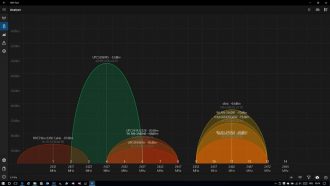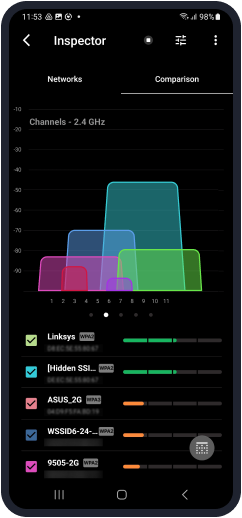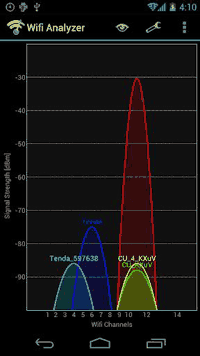


It’s sometimes better to use a channel that’s utilized by three other networks that are very far away than one network that’s very close.

Consider the strength of each found network: The number of networks using a WiFi channel isn’t the only factor that matters.Analyze WiFi channels at different times of the day: Some WiFi networks, such as those created by printers and wireless security cameras are active only during certain times of the day, so it pays off to analyze WiFi channels more than once.Here are some basic WiFi channel planning best practices to help you achieve this goal: When using NetSpot to find the best WiFi channel, you need to keep in mind that your ultimate goal is to avoid co-channel interference, which occurs when two or more WiFi routers operate on the same channel or neighboring channels. With noise, you want to get as far away from zero as possible, so -90 is better than -80. For example, an RSSI of -50 is better than an RSSI of -60. RSSI is indicated in negative numbers, and the closer it is to zero the better because zero means that no signal strength has been lost during transmission. Noise indicates how much interference caused by other signals affects the particular connection. The former stands for “Received Signal Strength Indicator,” and indicates how well a WiFi-enabled device can receive signals from a WiFi router. To determine which non-overlapping WiFi channel is the best, you need to consider Step 1: Understanding RSSI and Noise Values In such situations, your best option is to use a WiFi channel scanner or analyzer and find the least crowded non-overlapping channel. In public spaces, apartment buildings, offices, and other densely populated areas, it’s very common for multiple WiFi routers to broadcast simultaneously on a single non-overlapping channel.


 0 kommentar(er)
0 kommentar(er)
